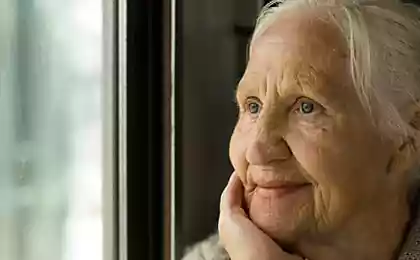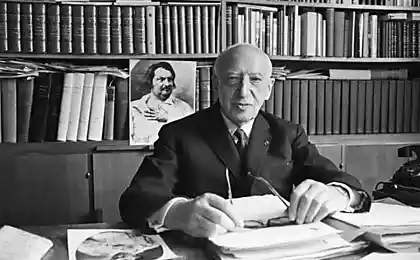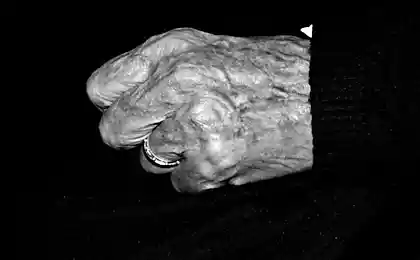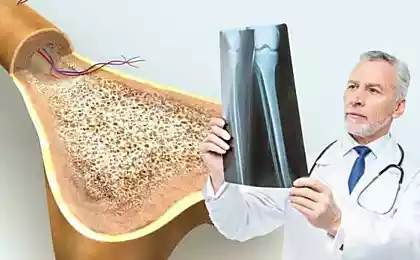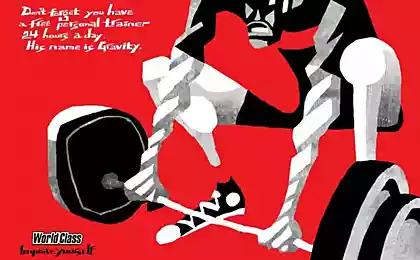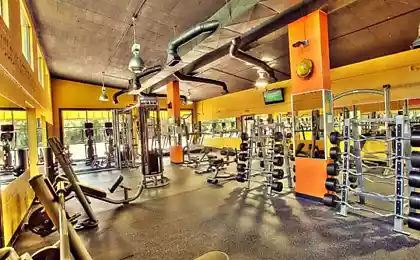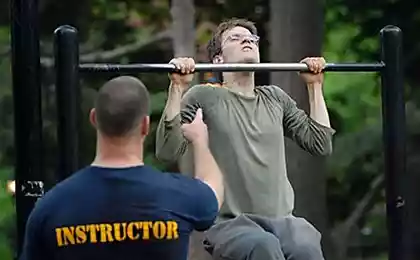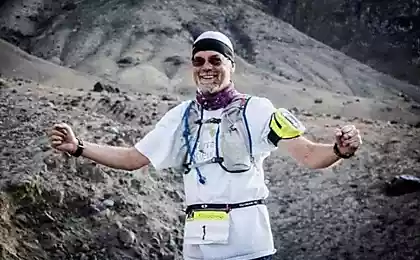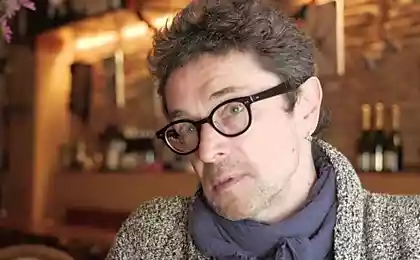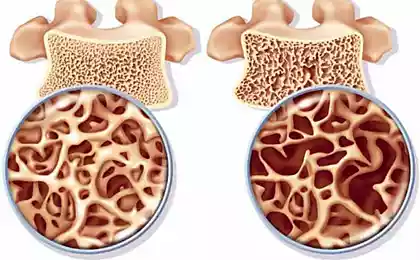443
Strength training, as a panacea for old age
Seventeen million seven hundred ninety seven thousand five hundred twenty nine
Was news to me, when I went to study for a fitness trainer, HOW it increases bone density after exercise. I used to think that this is exclusively... biochemical processes in the body — increases metabolism, improves health (in General, the semi-mythical sense), "flushed toxins", and everything becomes better and more beautiful, and the bones too. But it turns out... more On that below.
1. So place unpleasant transformations in the skeleton and posture of a person because of decreasing bone density with age:
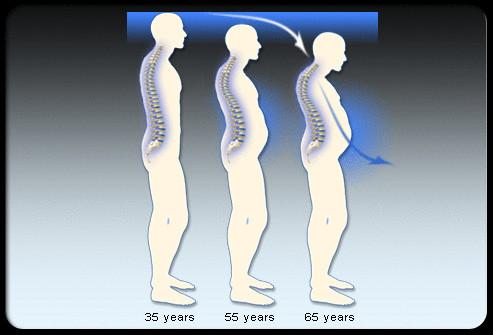
2. In women, unfortunately, this process is greatly accelerated due to change in hormonal levels throughout life, and greatly after menopause.
3. But the woman is 75 years old (!) the incomparable Ernestine Shepard (Ernestine Shepherd).
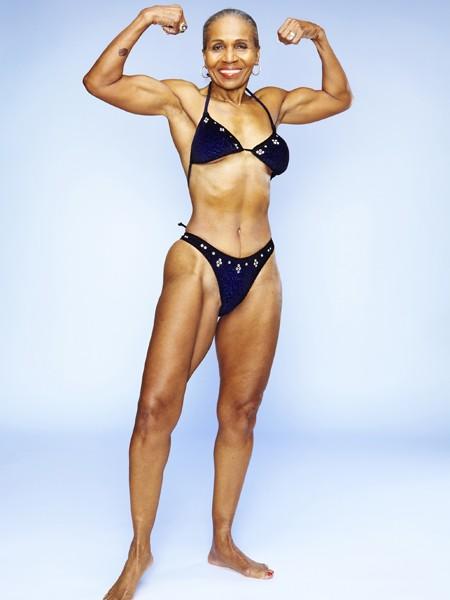
Why do you think it did not affect these changes with age?
Well, apart from a very strong back that can keep the body. Not to mention the fact that with age it is very difficult to gain at least some muscle mass and develop strength... she has very good bone density. Not appropriate for her age, in the best sense of the word.
4. Let's see how the bone age — a little later
or from a sedentary lifestyle — a little earlier:
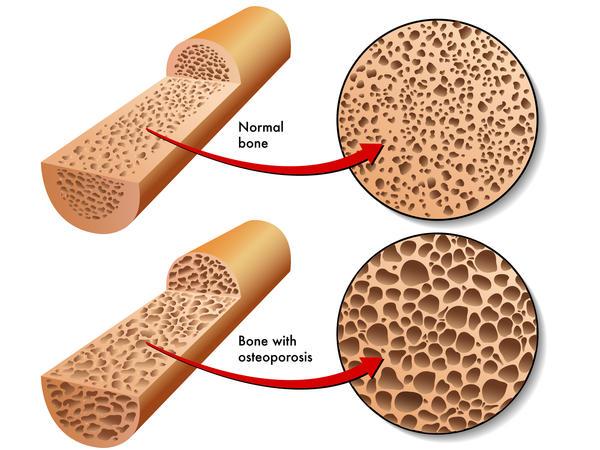
The top picture is a good dense bone (not to be confused with the wide bone on the hips! :))
The bottom picture is a bone with a low plostnost, very brittle and ready to fracture.
5. But the secret actually lies in strength training. In their mechanical influence on the bone tissue. When we do power exercise, your muscles contract. Muscle pulls the bone through the tendon, in that particular location on the bone to which it is attached. The body begins to increase the density of bone in this particular place so the bone could not resist this pull, in response to this load.
The more regular power loads, the higher raise the weight, the higher density is forced to create bone tissue in this place. In this case, the bone density will be greater in the attachment point more than the "working" muscles, than in the place where the muscles don't work.
6. For example, each vertebra of our spine carries a huge load. And to the spine attaches a lot of muscles: the main bigger and stronger skeletal muscles and the smaller stabilizers. And when the bone tissue in the spine becomes less dense as the picture on the left, the spine ceases to perform its supporting function, as in the right illustration.
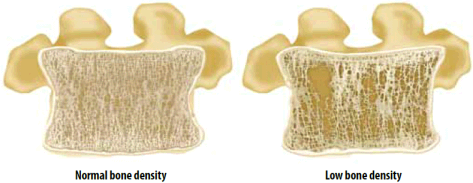
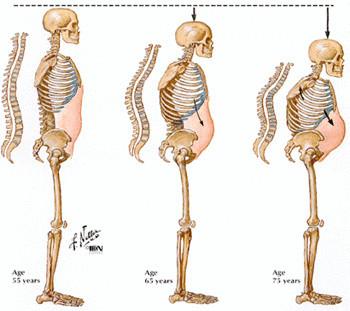
7. Of course, in addition to the mechanical effects of muscle contractions that affect the increase in tissue density, there are also changes in the biochemical processes which increases the metabolism of the bone tissue. They, too, largely start weight training:
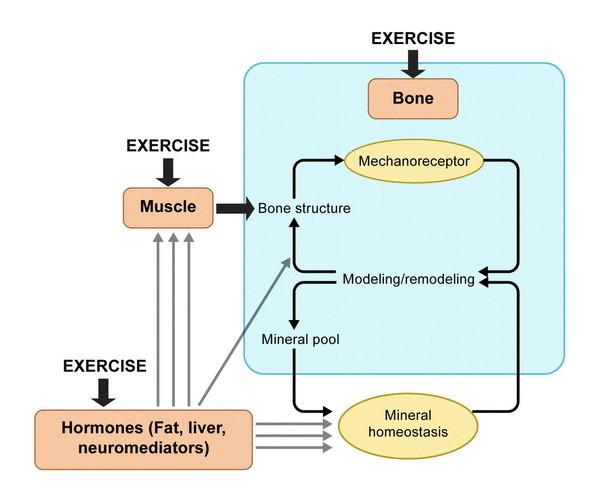
Easier, this can be explained as follows: the body does not need calcium if the body does not waste it. As soon as he starts to spend, he begins to consume and digest. About how it works metabolism of individual tissues and whole body in General.
Keep in mind that calcium is the primary chemical component in the process of muscle contraction. When you reduce muscle, the calcium is wasted. When the tendon pulls the bone and the bone density increases — calcium is wasted too. So it starts to absorb only after this point. To lie on the couch and have minerals and vitamins or food rich in them — are meaningless because they do not need the body, it does not spend.
Source: meet2fit007.livejournal.com/11730.html
Was news to me, when I went to study for a fitness trainer, HOW it increases bone density after exercise. I used to think that this is exclusively... biochemical processes in the body — increases metabolism, improves health (in General, the semi-mythical sense), "flushed toxins", and everything becomes better and more beautiful, and the bones too. But it turns out... more On that below.
1. So place unpleasant transformations in the skeleton and posture of a person because of decreasing bone density with age:

2. In women, unfortunately, this process is greatly accelerated due to change in hormonal levels throughout life, and greatly after menopause.
3. But the woman is 75 years old (!) the incomparable Ernestine Shepard (Ernestine Shepherd).

Why do you think it did not affect these changes with age?
Well, apart from a very strong back that can keep the body. Not to mention the fact that with age it is very difficult to gain at least some muscle mass and develop strength... she has very good bone density. Not appropriate for her age, in the best sense of the word.
4. Let's see how the bone age — a little later
or from a sedentary lifestyle — a little earlier:

The top picture is a good dense bone (not to be confused with the wide bone on the hips! :))
The bottom picture is a bone with a low plostnost, very brittle and ready to fracture.
5. But the secret actually lies in strength training. In their mechanical influence on the bone tissue. When we do power exercise, your muscles contract. Muscle pulls the bone through the tendon, in that particular location on the bone to which it is attached. The body begins to increase the density of bone in this particular place so the bone could not resist this pull, in response to this load.
The more regular power loads, the higher raise the weight, the higher density is forced to create bone tissue in this place. In this case, the bone density will be greater in the attachment point more than the "working" muscles, than in the place where the muscles don't work.
6. For example, each vertebra of our spine carries a huge load. And to the spine attaches a lot of muscles: the main bigger and stronger skeletal muscles and the smaller stabilizers. And when the bone tissue in the spine becomes less dense as the picture on the left, the spine ceases to perform its supporting function, as in the right illustration.


7. Of course, in addition to the mechanical effects of muscle contractions that affect the increase in tissue density, there are also changes in the biochemical processes which increases the metabolism of the bone tissue. They, too, largely start weight training:

Easier, this can be explained as follows: the body does not need calcium if the body does not waste it. As soon as he starts to spend, he begins to consume and digest. About how it works metabolism of individual tissues and whole body in General.
Keep in mind that calcium is the primary chemical component in the process of muscle contraction. When you reduce muscle, the calcium is wasted. When the tendon pulls the bone and the bone density increases — calcium is wasted too. So it starts to absorb only after this point. To lie on the couch and have minerals and vitamins or food rich in them — are meaningless because they do not need the body, it does not spend.
Source: meet2fit007.livejournal.com/11730.html

